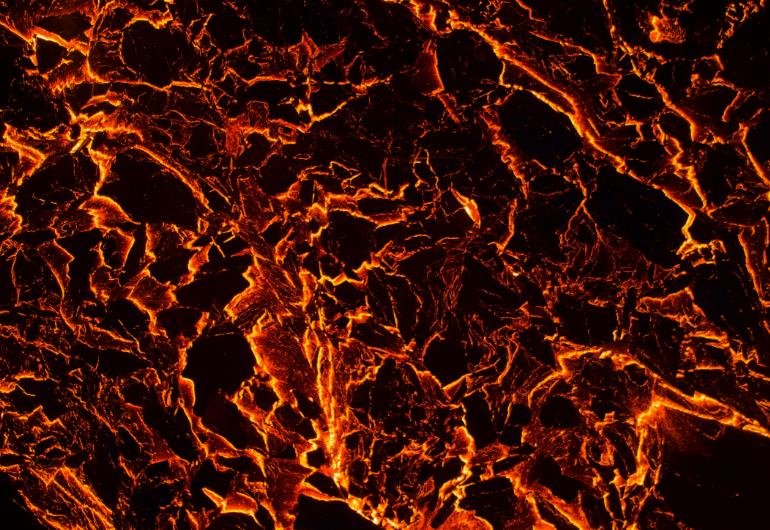In a bold stride towards sustainable energy, international scientists are tapping into the Earth’s molten core to revolutionize geothermal power. At the forefront of this endeavor is the Krafla Magma Testbed (KMT) in Iceland, where researchers are pioneering methods to harness the extreme heat of magma for next-generation geothermal systems. This groundbreaking project promises to unlock an almost limitless renewable energy source, positioning geothermal power as a key player in the global energy transition.
Exploring the Depths: The Krafla Magma Testbed
Nestled in the heart of Iceland’s Krafla volcano, the Krafla Magma Testbed (KMT) stands as the world’s first open-access magma research facility. Established near an active volcanic site, KMT is dedicated to understanding how magma can be directly harnessed for energy production. Unlike traditional geothermal systems that rely on hot water reservoirs, KMT aims to exploit magma’s immense thermal energy, which lies just 2.1 kilometers beneath the surface.
Drilling into the magma chamber allows scientists to study its behavior and develop technologies to efficiently extract heat. Yan Lavallée, a volcanology professor at Ludwig Maximilians University in Munich and head of KMT’s science committee, likens the project to a “moonshot” that could transform geothermal energy. By creating an underground observatory, the team hopes to forecast volcanic eruptions and advance geothermal systems that utilize magma’s extreme temperatures.

Unlocking Unlimited Heat: The Potential of Magmatic Energy
Geothermal energy remains a largely untapped renewable resource, with 99.9% of the Earth’s interior maintaining temperatures above 100°C. The KMT project seeks to unlock this vast reservoir of heat, which could provide a sustainable and continuous energy supply. Traditional geothermal plants extract heat from hot water and steam, but magma offers a much hotter and more potent source of energy.
Advantages of Magmatic Geothermal Systems:
- Higher Efficiency: Magma’s extreme temperatures can generate more electricity compared to conventional geothermal sources.
- Sustainability: Harnessing magma provides a nearly inexhaustible energy source, significantly reducing dependence on fossil fuels.
- Environmental Impact: Geothermal energy emits minimal greenhouse gases, making it a clean alternative to traditional energy sources.
The potential of magmatic geothermal systems lies in their ability to produce large-scale power with a minimal environmental footprint. By drilling directly into the magma body, scientists can access higher heat flows, which translates to more efficient energy generation and lower operational costs over time.
Pioneering Technology: Innovations at KMT
The Krafla Magma Testbed is not just about drilling deeper; it’s about developing the technology needed to withstand the harsh conditions near magma. Researchers are testing various materials, including high-grade nickel and titanium alloys, which can endure extreme heat, pressure, and corrosive gases emitted by magma. These innovations are crucial for creating durable infrastructure that can operate reliably in such an unforgiving environment.
Key Technological Developments:
| Innovation Area | Description |
|---|---|
| High-Grade Alloys | Development of materials that resist extreme heat and corrosion. |
| Borehole Engineering | Techniques for drilling and maintaining boreholes in magma-rich areas. |
| Heat Extraction Systems | Advanced systems to efficiently transfer and convert magma heat into usable energy. |
By overcoming these technological challenges, the KMT team aims to establish a viable model for magmatic geothermal energy that can be replicated worldwide. The success of this project could lead to a new era of geothermal power, providing a stable and renewable energy source for generations to come.
Future Horizons: Transforming Global Energy
Looking ahead, the Krafla Magma Testbed is set to make significant strides in geothermal research. Starting in 2026, the team will commence drilling the first of two boreholes to create an underground magma observatory. The second borehole, scheduled for 2028, will feature a testbed for next-generation geothermal power stations designed to exploit magma’s full potential.
Rosalind Archer, dean of Griffith University and former director of the Geothermal Institute in New Zealand, highlights the transformative potential of this research. “Reaching deeper and much hotter heat reserves is the ‘Holy Grail’ of geothermal energy,” Archer stated. The KMT project is closely watched by the global geothermal community, with many experts believing it could be the catalyst for widespread adoption of magmatic geothermal systems.
Projected Milestones:
- 2026: Initiation of the first borehole to establish the underground observatory.
- 2028: Drilling of the second borehole, incorporating a testbed for advanced geothermal power stations.
- 2030: Completion of the research facility, paving the way for commercial applications of magma-based geothermal energy.
The integration of volcanic magma into geothermal energy systems represents a paradigm shift in renewable energy. As scientists continue to explore and innovate, the dream of harnessing the Earth’s inner heat for clean, sustainable power inches closer to reality.
















